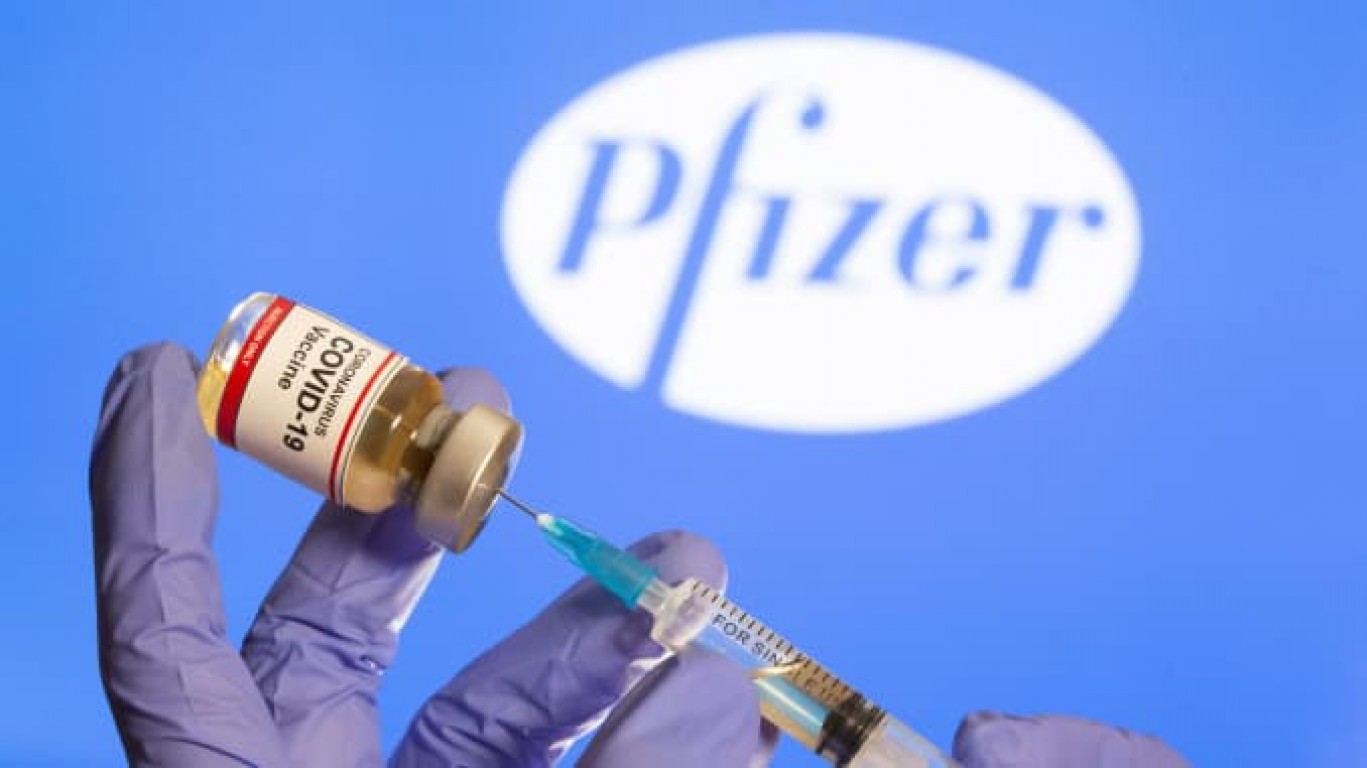
Pfizer (NYSE:PFE) is a well-known pharmaceutical company popular with dividend growth and income investors. The company has grown into one of the largest pharma companies. The company’s success in the past couple of years during the COVID-19 pandemic makes the stock attractive.
Pfizer has used higher revenue, earnings, and cash flow smartly. Currently, Pfizer is yielding over 3% and is a Dividend Contender. Even though Pfizer has performed relatively well during the bear market of 2022, the stock is trading at a low price-to-earnings ratio of about 7.65X, suggesting PFE is a long-term buy.
Overview Of Pfizer
Pfizer is one of the largest global pharmaceutical companies. In the past several years, it was reorganized into a worldwide R&D pharma company. In addition, the firm divested its consumer health and off-patent business.
Today, Pfizer focuses on inflammation & immunology, oncology, vaccines, and rare diseases. Major brands and therapies include Prevnar, Ibrance, Xtandi, Sutent, Inlyta, Paxlovid, Comirnaty, Xeljanz, Enbrel, and more.
Sales have more than doubled in the past two years because of the COVID-19 vaccine, Comirnaty, an anti-viral drug, and Paxlovid. Total revenue was $81,288 million in 2021 and $99,878 million in the past twelve months.
Selected Data for Pfizer (NYSE)
| Ticker | PFE |
| Market Cap | $277.80 billion |
| Stock Price | $49.49 |
| Dividend (FWD) | $1.60 |
| Dividend Yield | 3.23% |
| P/E Ratio (FWD) | 7.65 |
Source: Data from Portfolio Insight (as of November 30, 2022)
PFE’s Dividend And Dividend Safety
PFE is a Dividend Contender with 12 consecutive annual increases. The forward dividend rate is $1.60 per share; the calculated dividend yield is ~3.23% at the current price. Unfortunately, this value is less than the trailing 5-year average of 3.66%. But the dividend yield is more than twice the S&P 500 Index’s average.
The company’s last quarterly dividend increase was to $0.40 per share from $0.39 per share in December 2021. Investors should expect another increase at the end of 2022. Pfizer generally raises the dividend in the low-to-mid single-digits. That said, the dividend growth rate is slowing. It was 5.39% CAGR in the trailing five years and 6.91% CAGR in the past ten years.
Additionally, Pfizer has outstanding dividend safety metrics from the view of earnings, free cash flow (FCF), and debt.
Based on adjusted earnings, the forward payout ratio is about 35% based on an annual dividend of $1.60 per share and estimated diluted non-GAAP earnings per share of $6.47 in 2022. Our target value is 65% signifying the company’s dividend is safe.
However, Pfizer’s revenue and net income surged because of its success with the COVID-19 vaccine and anti-viral. Declining sales of these two therapies will probably result in a high payout ratio in the future.
The dividend is also safe from the standpoint of FCF. In the last twelve months, FCF was about $23,362 million. The dividend required $8,927 million, giving a dividend-to-FCF ratio of about 38%. This percentage is almost half of our target of 70%, suggesting the dividend is safe.
Pfizer is an acquisitive company and tends to use debt often. At the end of Q3 2022, PFE had ~$33,304 million in cash, cash equivalents, and marketable securities. It held $5,990 million in short-term debt, and long-term debt was $34,294 million.
But debt is not a risk for the dividend with a leverage ratio of 0.16X and interest coverage of more than 31X. Pfizer has used the cash flow from COVID-19 revenue to plus up its cash position.
Moreover, PFE has an A+/A2 upper medium investment grade credit rating, a bit lower after its reorganization. However, debt is not a concern for dividend safety.
Competitive Advantage, Risks, and Valuation
As one of the largest global pharmaceutical companies, Pfizer has significant scale in R&D, manufacturing, regulatory affairs, distribution, and marketing. Scale and size allow Pfizer to bring new therapies to market, partner with smaller companies, or acquire entire companies outright. Only a few other pharma companies can do so.
Also, Pfizer has at least eight drugs with $1+ billion in annual revenue and a robust pipeline. In addition, the company has used its success with the COVID-19 vaccine and anti-viral to reinforce its pipeline.
Pfizer faces risks with patent expiration, generics, competition, and FDA regulatory approvals. The political landscape is also filled with efforts to combat higher prices, especially in the United States. The Inflation Reduction Act may result in Medicare negotiating prices for some of Pfizer’s drugs.
Pfizer is undervalued. At the current stock price, the company trades at a forward PE ratio of about 7.65X, below the range in the past decade of 14.4X to 15.3X, implying PFE is undervalued. But the dividend yield is higher than the trailing 5-year average.
However, Pfizer is increasingly viewed as an excellent dividend stock. Popular dividend ETFs, like SCHD or VYM, include the stock in their top 10 holdings. The combination of market leadership, a growing dividend, dividend safety, and undervaluation makes PFE a long-term buy.
This article originally appeared on ValueWalk
Sponsored: Find a Qualified Financial Advisor
Finding a qualified financial advisor doesn’t have to be hard. SmartAsset’s free tool matches you with up to 3 fiduciary financial advisors in your area in 5 minutes. Each advisor has been vetted by SmartAsset and is held to a fiduciary standard to act in your best interests. If you’re ready to be matched with local advisors that can help you achieve your financial goals, get started now.






